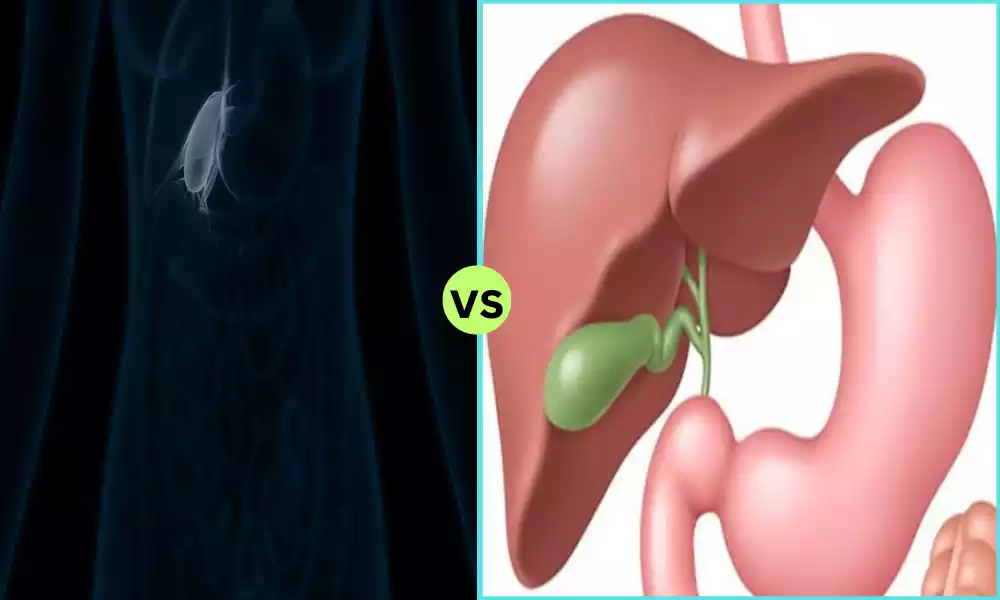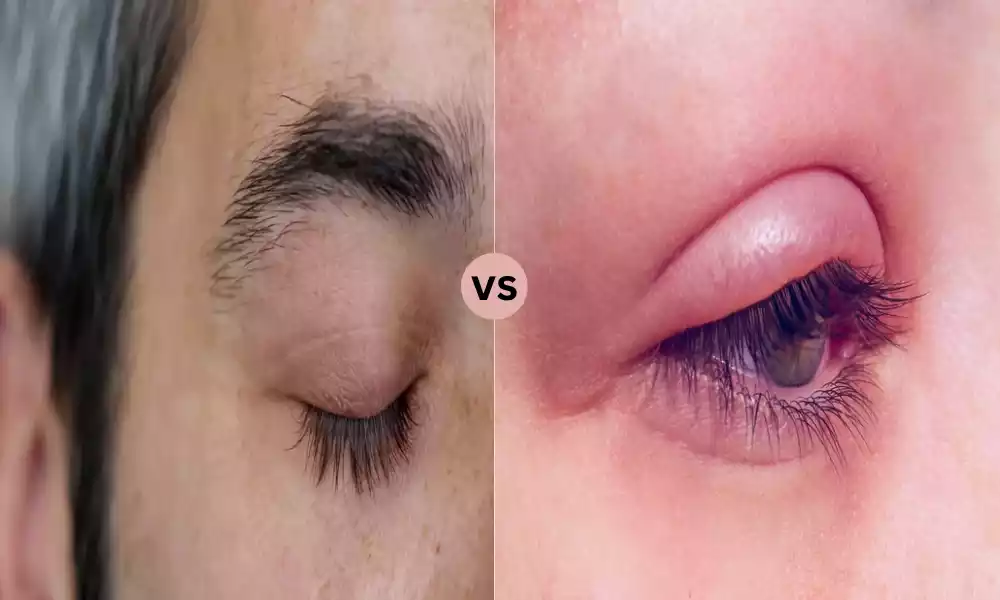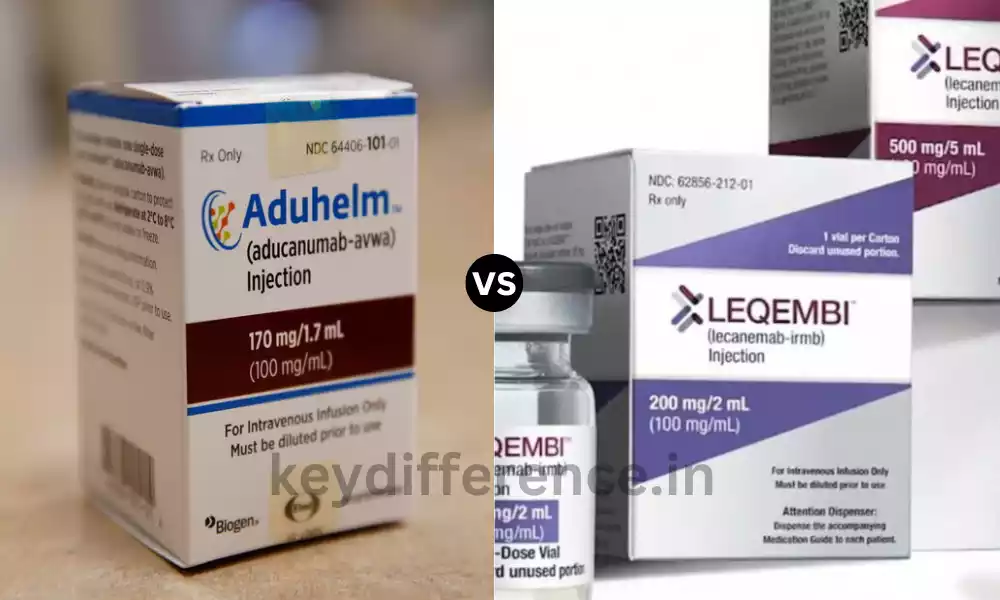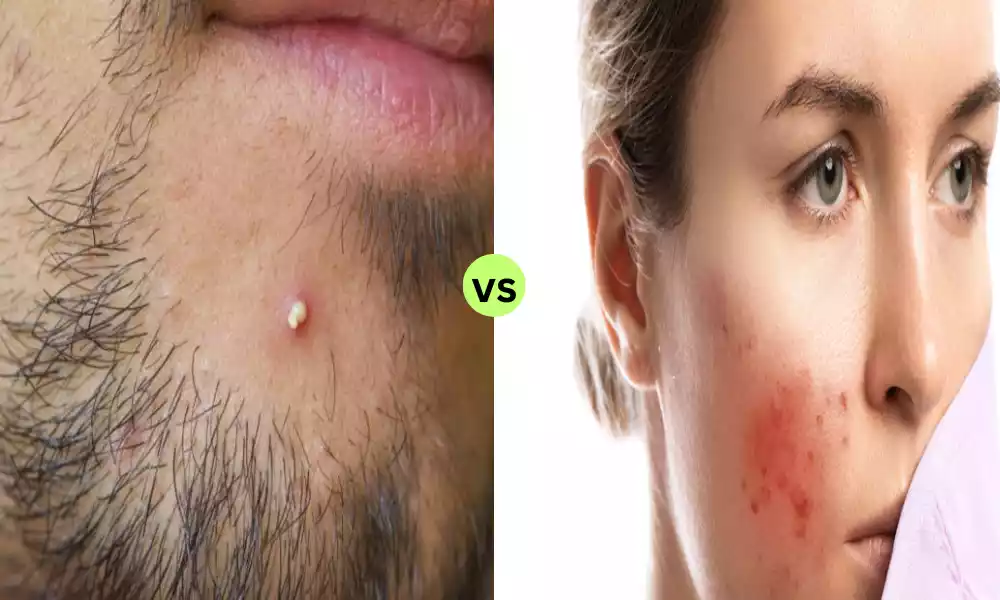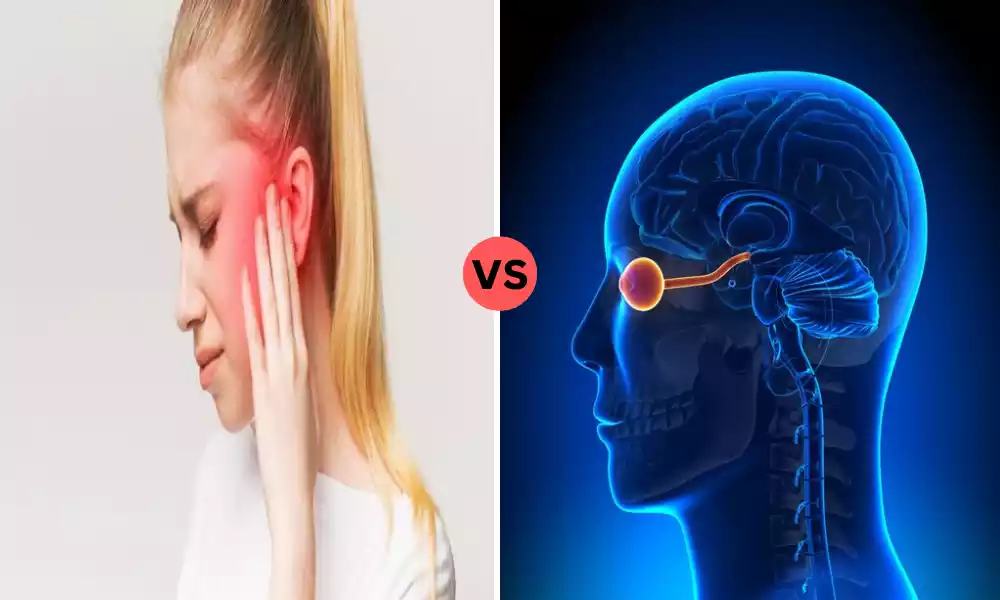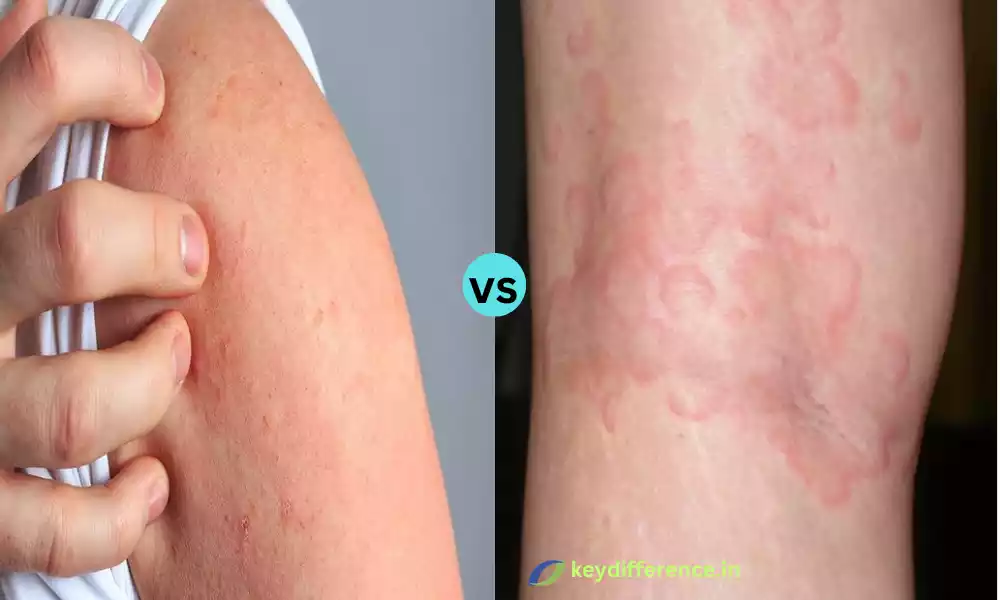“Biliary Colic and Cholecystitis, two conditions associated with gallbladder health that frequently create confusion due to their similarities, can often cause alarm.
Biliary Colic involves sudden pain caused by a temporary blockage of the bile duct on the other hand, Cholecystitis refers to inflammation of the gallbladder often caused by prolonged blockage of its outlet duct.
Both require medical treatment promptly but differ significantly when it comes to causes, symptoms, and treatment approaches – this article intends to explore and delineate their differences while providing insight into two distinct gallbladder health concerns that often go undetermined.”
Explanation of Biliary Colic
Iliary Colic is a type of abdominal pain caused when gallstones temporarily block the bile duct that transports bile from the gallbladder to the small intestine, as bile helps with fat digestion.
When gallstones block this channel of transporting bile from the gallbladder to the small intestine, intense pain often arises on either the upper right side or middle area of the upper abdomen.
Biliary Colic is a painful condition that typically lasts from several minutes to several hours and may come and go, without becoming inflamed or infected. Most often it resolves when the gallstone passes into the small intestine if an obstruction persists it could result in more serious conditions like Cholecystitis
Therefore it’s vital that medical professionals and individuals at risk understand its nature so timely intervention can prevent complications.
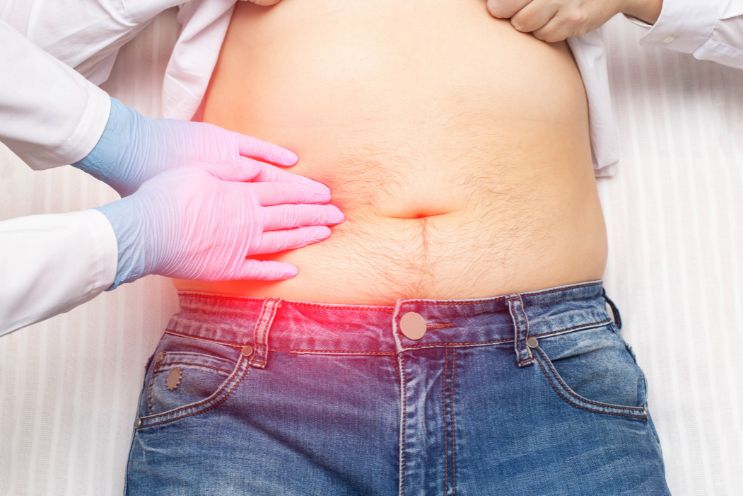
Explanation of Cholecystitis
Cholecystitis, also known as gallbladder inflammation, occurs when there is an obstruction to the cystic duct (an opening between the gallbladder and bile duct) due to gallstones or other blockages obstructing its normal flow resulting in build-ups of bile in the gallbladder leading to swelling, leading to further irritation and inflammation.
Cholecystitis differs from Biliary Colic in that its symptoms last longer and may lead to serious complications if left untreated, including severe abdominal pain, fever, nausea and vomiting, and, in extreme cases, gallbladder infection or rupture.
Treatment of Cholecystitis often includes hospitalization, antibiotics, and pain relief drugs as well as surgical removal of the gallbladder. Early diagnosis and appropriate medical intervention are key in order to manage and avoid complications associated with Cholecystitis.
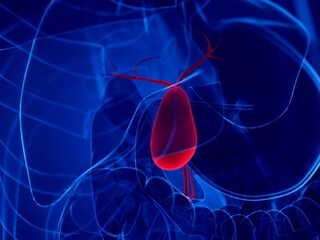
Importance of understanding the difference Between Biliary Colic and Cholecystitis
Unmasking the distinctions between Biliary Colic and Cholecystitis is critical for multiple reasons, including:
Diagnosis and Treatment: Although both conditions involve the gallbladder and may present similar symptoms, their causes and treatment strategies differ significantly – proper differentiation between them is critical to accurate diagnosis and medical intervention.
Prevention: Biliary Colic can often resolve itself on its own, but if it progresses into Cholecystitis it could result in serious consequences, including gallbladder rupture or infection. Early recognition helps ensure prompt treatment to minimize these potential dangers.
Patient Education: For individuals at risk for gallstones, having knowledge about them enables them to recognize symptoms early and seek medical assistance without delay, leading to faster recovery time and reduced risk. This awareness can ultimately result in faster healing times with reduced complications.
Healthcare Provider Insights: For healthcare providers, understanding the subtle distinctions among these conditions helps sharpen clinical judgment and facilitate personalized patient care while supporting more efficient treatment planning.
Public Health Implications: Understanding these distinctions provides essential knowledge for community education and public health planning, channeling resources toward prevention, early detection, and treatment efforts.
Research and Development: When conducting medical research, distinguishing between Biliary Colic and Cholecystitis can guide studies that lead to further advancements in understanding, prevention, and treating gallbladder-related disorders.
As previously outlined, distinguishing between Biliary Colic and Cholecystitis can have far-reaching implications in terms of diagnosis, treatment, patient care, public health concerns, and medical research, making it a core part of healthcare related to gallbladder diseases.
Comparison Table of Biliary Colic and Cholecystitis
Certainly! Below is a comparison table that highlights the key differences and similarities between Biliary Colic and Cholecystitis:
| Aspect | Biliary Colic | Cholecystitis |
|---|---|---|
| Definition | Temporary blockage of the bile duct by a gallstone | Inflammation of the gallbladder due to obstruction |
| Cause | Gallstone obstructing the bile duct | A gallstone blocking cystic duct leading to swelling |
| Symptoms | Sudden, sharp pain in the upper abdomen | Prolonged pain, fever, nausea, vomiting |
| Duration of Pain | Few minutes to several hours | Persistent, can last for days |
| Inflammation | No | Yes |
| Treatment | Pain relief, observation | Hospitalization, antibiotics, possible surgery |
| Complications if Untreated | May progress to Cholecystitis | Infection, gallbladder rupture, sepsis |
| Prevention | Diet, managing risk factors | Timely treatment of Biliary Colic, diet |
| Diagnosis Methods | Physical exam, ultrasound, blood tests | Physical exam, ultrasound, CT scan, blood tests |
While both conditions relate to the gallbladder and can involve gallstones, Biliary Colic is a temporary condition often resolved once the gallstone passes, whereas Cholecystitis is an inflammatory condition that requires more intensive medical care.
Understanding these distinctions is crucial for both medical professionals and patients to ensure proper diagnosis, treatment, and prevention.
Etiology and Pathophysiology
Sure! Below I will give a detailed account of both Biliary Colic and Cholecystitis’ causes as well as pathophysiologies (the functional changes associated with the disease):
Biliary Colic Etiology:
Gallstones: Gallstones are often the primary cause of Biliary Colic, as they can temporarily block the bile duct.
Spasm of Bile Duct: Sometimes the bile duct itself may spasm and produce symptoms similar to blockages.
Pathophysiology:
Obstruction of Bile Duct: Gallstones can obstruct the flow of bile from the gallbladder to the small intestine, leading to an interruption in this essential process.
Increase in Pressure: Blockage can also lead to an increase in internal pressure within both structures – both gallbladder and bile duct.
Pain: Biliary Colic is marked by intense, sharp pain. Once the gallstone is out of the way, bile flows freely again and the pain diminishes.
Cholecystitis Etiology:
Gallstones: Cholecystitis is most often caused by gallstones obstructing the cystic duct and leading to inflammation, but other possible sources may include tumors or scarring blocking it off completely tumors or scarring can sometimes obstruct it as well.
Bacterial Infection: Additionally, an infection could also contribute to or worsen inflammation and symptoms may worsen over time.
Pathophysiology: In some instances, bacterial infections could also play a part in creating or worsening symptoms compared to existing conditions.
Cystic Duct Obstruction: When the cystic duct becomes blocked, bile accumulates in the gallbladder. This accumulation causes irritation and inflammation of its walls resulting in gallbladder inflammation.
Swelling and Infection: Extended obstruction can result in swelling and potential bacterial infection, further increasing inflammation.
Rupture Potential: If left untreated, prolonged obstruction could result in gallbladder distension leading to distention or rupture and becoming life-threatening. Biliary Colic results from temporary obstruction of the bile duct, leading to acute pain that typically goes away once it clears away.
Cholecystitis on the other hand involves inflammation in the gallbladder due to persistent blockage that often requires medical intervention to avoid serious complications. Recognizing their causes and physiological changes for accurate diagnosis and treatment.
Insights from Medical Professionals
Expert opinions from medical professionals can provide invaluable perspective and understanding of the differences between Biliary Colic and Cholecystitis. Here are a few key insights:
Early Intervention and Diagnosis: Medical professionals emphasize the significance of early intervention. Although Biliary Colic may resolve on its own, untreated it could progress into Cholecystitis thus proper diagnosis and differentiation between the two conditions are critical in providing appropriate care.
Treatment Approaches: Treatment approaches vary depending on the nature and severity of each condition, but conservative measures might include pain management and observation for Biliary Colic, while hospitalization, antibiotics, or even surgery might be required in cases of Cholecystitis.
Medical professionals recognize that decisions regarding care must be tailored specifically to each case in accordance with patient needs.
Prevention Strategies: Diet and lifestyle modifications may be used as preventative strategies against both Biliary Colic and Cholecystitis. Medical experts often suggest restricting high-fat diets while encouraging weight management strategies in order to decrease gallstone risks – one of the leading causes of both conditions.
Important Considerations in Medical History and Physical Examination: Experienced healthcare providers recognize the significance of conducting a detailed medical history analysis and physical exam as they can reveal clues of gallbladder disease as well as direct further diagnostic testing.
Advancements in Diagnostic Tools: Medical professionals appreciate the role played by modern diagnostic tools such as ultrasounds, CT scans, and blood tests in distinguishing between two conditions more accurately and providing more tailored treatment plans.
These modern diagnostic tools enhance accuracy in diagnosis and allow for more targeted care plans.
Education and Patient Engagement: Healthcare providers believe strongly in engaging their patients in their care, informing them about their conditions, and including them in treatment decisions.
Understanding the differences between Biliary Colic and Cholecystitis allows patients to recognize symptoms promptly and seek medical help immediately.
Research and Continuous Learning: Ongoing research and continued learning are integral parts of medical practice. Healthcare providers stay abreast of all of the latest findings related to gallbladder disorders so as to provide evidence-based care.
These insights from medical professionals demonstrate the complexity and nuances of diagnosing and treating Biliary Colic and Cholecystitis while emphasizing patient education, prevention, and individualized care as integral elements in effectively managing these conditions.
Lifestyle and Dietary Considerations
Lifestyle and diet play an essential role in managing Biliary Colic and Cholecystitis.
Here is an outline:
Lifestyle Considerations
Weight Management: Adopting healthy weight practices is key for lowering the risk of gallstone formation rapid weight loss increases this risk further. Rapid weight gain or loss, on the other hand, could contribute to gallstones.
Regular Exercise helps promote good digestion and lower the risk of gallstones. Engaging in physical activity regularly also has other advantages, including improving energy and endurance and relieving tension in muscles, and reducing anxiety levels.
Avoid Alcohol Abuse: Drinking too much alcohol can increase your risk for liver and gallbladder conditions such as Biliary Colic and Cholecystitis.
Dietary Considerations
Low-Fat Diet: Consuming too many unhealthy fats such as those found in avocados, olive oil, and nuts may increase your risk of gallstones. Opting for healthier sources such as avocados, olive oil, and nuts may provide much-needed relief from gallstones.
Consuming foods high in fiber – like whole grains, fruits, and vegetables – helps support good digestive health while possibly decreasing the risk of gallstone formation.
Avoid Refined Sugars and Carbohydrates: Sugar and carbohydrates that contain refined grains can contribute to obesity and metabolic issues, increasing your risk for gallbladder issues indirectly.
Regular, Balanced Meals: Skipping meals or fasting for extended periods may increase bile concentration in the gallbladder and increase your risk of gallstones eating regular, balanced meals is a way to help protect yourself.
Hydration: Drinking enough water helps promote overall digestive health and prevent gallstone formation.
Avoid Trigger Foods: Certain individuals may identify specific foods that exacerbate symptoms of Biliary Colic. When possible, avoiding such trigger foods could help avoid episodes altogether.
Monitoring Cholesterol Levels: Since cholesterol is often an element in gallstone formation, monitoring dietary cholesterol consumption by cutting back on animal fat consumption may prove helpful in protecting gallstone health.
Consulting Healthcare Providers: Consulting with healthcare professionals such as dietitians or nutritionists to develop an individualized diet plan can be the key to successfully managing gallbladder issues.
Adopting a healthy lifestyle and making conscious dietary decisions can have an enormous effect on biliary colic and cholecystitis prevention and management, often acting as part of a comprehensive approach that supplements medical interventions when necessary.
Reference Books
Certainly! Here are some reference books that medical professionals, students, and individuals interested in learning more about Biliary Colic, Cholecystitis, and gallbladder diseases may find valuable:
- “Schiff’s Diseases of the Liver” (Various Editions) – Edited by Eugene R. Schiff, Willis C. Maddrey, and Michael F. Sorrell.
- “Sleisenger and Fordtran’s Gastrointestinal and Liver Disease” (Various Editions) – By Mark Feldman, Lawrence S. Friedman, and Lawrence J. Brandt.
- “Current Surgical Therapy” (Various Editions) – Edited by John L. Cameron and Andrew M. Cameron. This book includes information about surgical interventions for gallbladder diseases.
- “Yamada’s Textbook of Gastroenterology” (Various Editions) – Edited by Daniel K. Podolsky, Michael Camilleri, J. Gregory Fitz, et al.
- “Harrison’s Principles of Internal Medicine” (Various Editions) – Edited by J. Larry Jameson, Dan L. Longo, et al. A fundamental reference for internal medicine that covers a wide range of diseases, including gallbladder disorders.
Conclusion
Biliary Colic and Cholecystitis are two conditions associated with gallstones that affect the gallbladder. While Biliary Colic involves temporary pain due to an obstruction in the bile duct, Cholecystitis involves inflammation within the gallbladder which requires more aggressive treatment plans.
Understanding the differences between these conditions is integral for proper diagnosis, management, and prevention.
Lifestyle and dietary considerations play an essential part in both conditions, underscoring the necessity for an interdisciplinary approach to care that encompasses patient education, early intervention strategies, and personalized treatment plans.
Led by medical professionals’ insight and advice as well as patient engagement in healthy lifestyle choices, such an approach provides a solid platform for effectively dealing with gallbladder issues.

